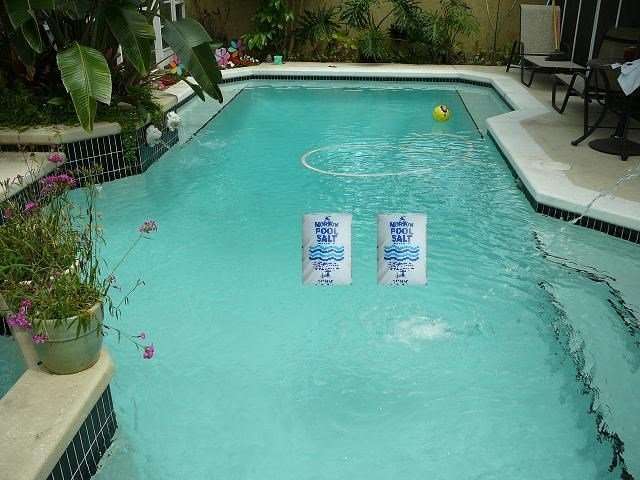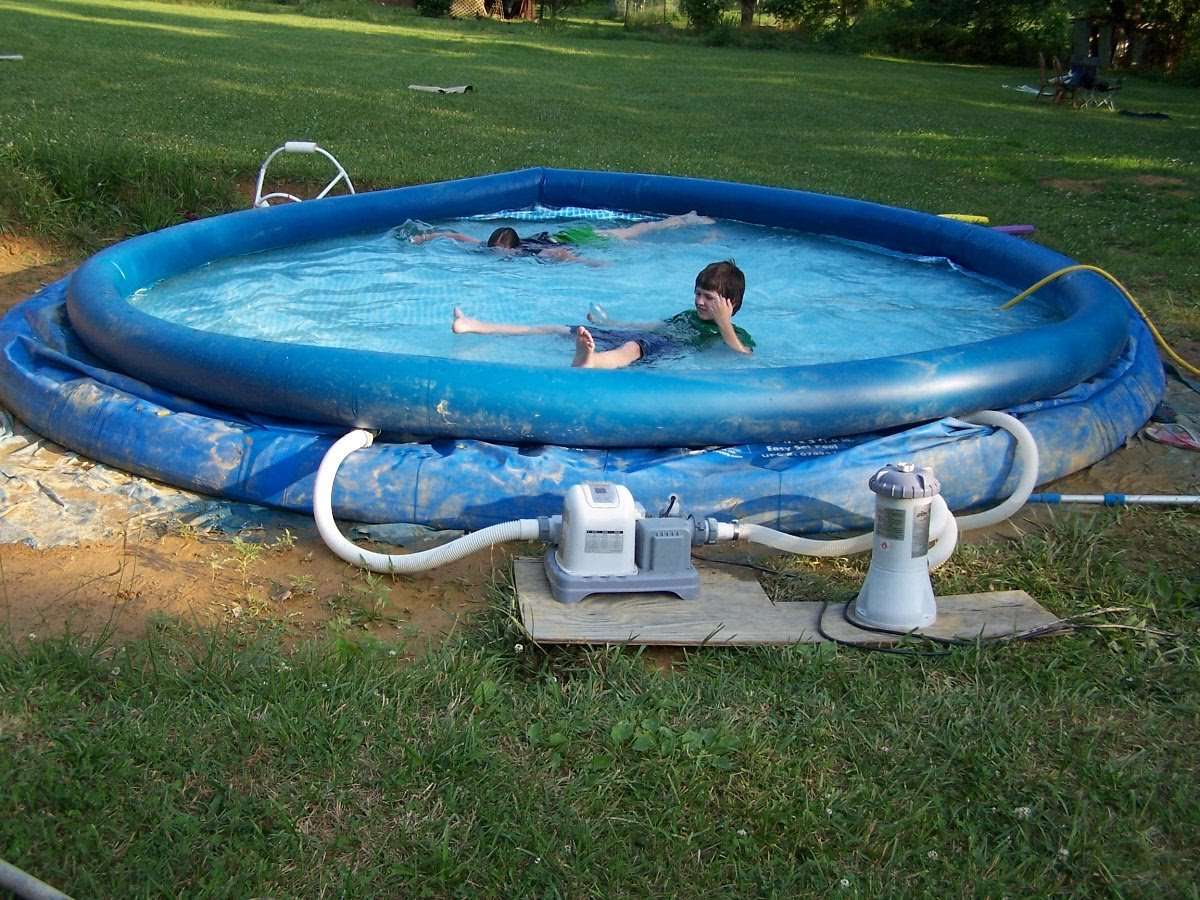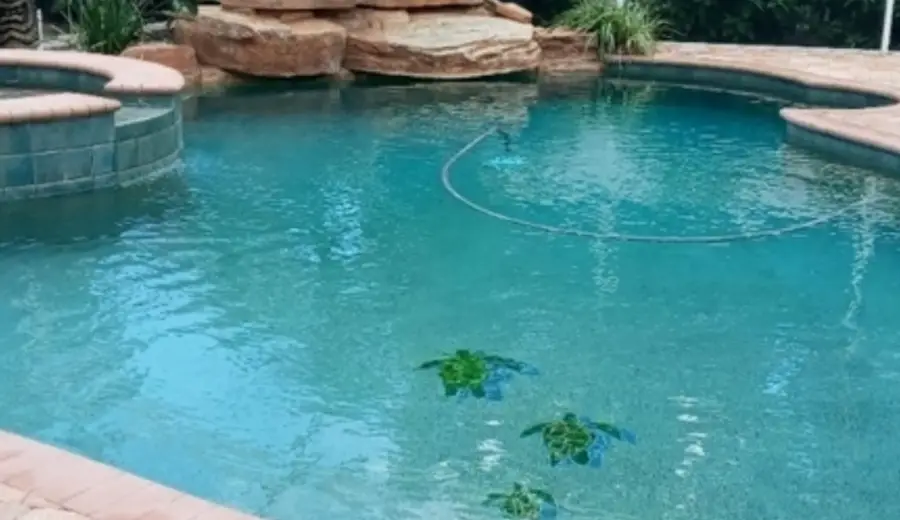How Much Salt Does The System Require
The amount of salt your pool requires depends on size of your pool. Your chlorinator needs a certain salt level to keep everything optimal. Check the instruction manual as it will advise what the desired level is, it usually ranges from 3,000 to 4,000 ppm . Dont worry, its all there in the manual and if you run into any trouble with your computations, you can just Contact Us with your pool specifications and chlorinator model and well do all the math for you!
A common misconception is that more salt is better, this is not the case. High salt levels could lead to over conductivity within the water and the resistor inside the chlorinator box to overheat and trip. Some Salt Water Chlorinators will have a low salt, LED light to alert you to the need to adjust your salt level.
Salt Pool Maintenance Must
For salt pool owners, scale build up is one of the most common challenges. This is because scale typically forms in hard to see places first, including the cell plates. The plates inside the electrolytic chlorine generator , which uses electricity and dissolved salt to produce chlorine for the pool. If left undetected, the scale build up will lower the effectiveness and shorten the lifespan of the cell.
What causes scale build up in a salt cell?
The salt cells ECG can offer an ideal breeding ground for two reasons heat and high pH production.
- Heat The warmer the water, the more calcium tends to drop out of pool chemical solutions and mineralize into a deposit. Calcium often forms around pool heaters because of the hotter temperatures.
- High pH pH is a by=product from the generator converting salt into chlorine . If the pH level is not maintained, scaling may develop around the pool surface and equipment.
How to prevent scale build up
There are many scale control solutions that you can add directly to circulating water. Depending on the product, you should add such a solution into the water every month. You can also work to keep your water pH balanced and clean build up as and when it happens.
How to clean the salt cell and remove scale build up
To clean the salt cell and remove scale build up, you will first need to get muriatic acid, a plastic bucket or salt cell stand, and a garden hose.
Pros And Cons Of Converting To A Saltwater Pool
Pool owners have many positive and negative aspects they should consider before they convert their pools to salt systems. While swimming in salt water is considered more enjoyable than swimming in traditionally chlorinated pools, the costs of initial installation and keeping up repairs can be off-putting to some homeowners. Here are some of the pros and cons of converting to a saline pool system.
MaintenanceMaintaining your saline pool is easier than maintaining a chlorinated pool. Because your salt system converts the salt to the needed chlorine, you are not having to constantly add more chlorine to your pool. This makes maintenance much easier. You still have to check your pools water for the appropriate chemical levels, but you do not have to be constantly pouring in buckets of chemicals to keep your pool safe.
Softer WaterAlthough saltwater pools do still contain chlorine, their water is much milder than in traditional systems. They are also not nearly as salty as you might imagine, having a salt content that is more like that in human tears than ocean water. This makes for a much more pleasant experience with swimming because opening your eyes underwater will not sting or burn the way it would if you opened your eyes in a conventional pool system.
Also Check: Pristine Blue Start Up Kit
What To Consider Beforehand
Saltwater pools require a larger initial investment. But you will save on chlorine in the long run.
Saltwater systems are also more complex than chlorine pools. They have more parts, such as the circuit board, salt cell, flow sensor, and flow switch. So you may need to hire an experienced technician if you ever encounter issues with the system.
Salt is corrosive and has the potential to damage certain materials. It also creates high pH levels and calcium build-up in pool equipment. So you have to take precautions, such as balancing the water and maintaining salt cells.
You should also avoid using specific types of pool liner, heaters, lighting, fixtures, and masonry that will corrode over time. Instead, use a cupronickel heater, or install a sacrificial zinc anode that will absorb all the corrosion.
What’s A Salt Water Pool

A salt pool has a salt cell that creates its own chlorine by causing an electrical reaction between the salt and the electrode.
So, instead of manually adding chlorine to your pool once a week, your pool is creating its own naturally. The difference is, though, that it is higher quality than the chlorine you can buy and it doesnt cause the same reactions to the skin and eyes.
It also doesnt produce those nasty chloramines people tend to have trouble with.
And you will never taste it because it doesnt even contain as much salt as human tears.
You May Like: Big Lots Pool Supplies
Estimate The Size Of Your Pool
Draining a chlorinated pool isnt required when converting, since both saltwater and mineral pools still rely on the element chlorine to control microbes. Rather than requiring large amounts of chlorine, a saltwater pool uses a chlorine generator, a device that sends an electrical charge through common sea salt to produce a low concentration of chlorine. A mineral pool uses a special filter. Select a chlorine generator or mineral filter rated above the volume of your pool. You can estimate the volume of your pool by multiplying the width of your pool by the length and then by the average depth of your pool. Then multiply the result by 7.5.
Using The Right Type Of Salt
You can use non-iodized salt purchased in bulk from a hardware store or home goods store. You can also find it in large bags labeled pool salt.
Follow the manufacturers instructions for your chlorine generator to determine how much salt you should use.
To add salt to your pool water, distribute it evenly while walking around your pool. Use a pool brush to stir the water until the salt has dissolved.
Read Also: Building An Inground Pool Yourself
Q: How Much Salt Do I Need For A Salt Water Pool
The amount of salt you need will vary for each salt generator and will also be dependent on your pool size in gallons.
But in general, adding 8 lbs of pool salt raises the level by 1,000 ppm per 10,000 gallons of water.
So, if you have a 20,000 gallon pool, you would probably need about 12 40 lb bags of salt to get it to the recommended 3,000 ppm level.
Of course, that assumes you are starting from zero, which most new pools will be at.
How Does A Saltwater Pool Work
Saltwater pools need salt in the water and electrodes in the plumbing. When the saltwater passes through the cell, an electrical reaction occurs between the salt and the electrode. This reaction creates chlorine.
Salt cells are also known as saltwater chlorine generators or salt chlorinators.
This chlorine effectively sanitizes the pool water but is not harsh like concentrated chlorine.
Saltwater systems also have a superchlorination feature that shocks the pool.
Saltwater systems have only one-tenth the salinity of seawater, so you wont taste or feel the salt in the pool water. Instead, saltwater pools have softer-feeling water.
Also Check: How To Use Metal Free In Pool
Take Precautions For Your Pool Liner
If you have a vinyl liner, youll be happy to know you can use a salt chlorinator system in your pool without taking any extra precautions. The liner will be exposed to lower levels of chlorine, so it may even extend your liners lifespan.
However, many inground pools have galvanized walls behind the liner. If your liner springs a leakeven a small leakallowing salinized water to seep out against the steel wall, the wall will eventually corrode.
Similarly, above ground pools with a lot of metal parts can rust over time due to exposure to salt water. If you have a resin above ground pool, you can make the switch without this concern.
Everything You Need To Know About Salt Water Pools
Have you heard people talking about salt water pools and wondered what all the hype was about?
Im not here to convince you one way or the other.
The decision on whether to have a salt water pool or not is usually just a matter of preference.
All I’m here to do is give you the low-down on what they are so you can decide for yourself.
Read Also: Keep Wasps Out Of My Pool
What Sized Chlorinator Do I Need
The Water TechniX Atomic Salt Water Chlorinator comes in three sizes: the WTA25, WTA35, and the WTA45.
- WTA25
- WTA35
- WTA45
While it would be tempting to pick a salt water chlorinator thats just right for your pool, here at Mr Pool Man we recommend sizing up! The size and capacity recommendations are there for normal pool operation, but really, lets admit it, theres really nothing normal about the heat waves we get here in Australia. The hotter it is, the more chlorine is needed to keep your pool sanitised and chlorinated.
Not to mention that the hotter it is, the more people want to jump into the pool, which causes a greater need for chlorine and chlorination. You can always turn your salt water chlorinator down for normal or cooler days, but theres no way to cause a chlorinator to go above its rated maximum for those high-demand days.
Install The Saltwater System

Installation instructions for each type of saltwater system
The drop-in saltwater system is the best choice for hot tubs because of affordable price, easy maintenance, and easy installation:
Installation is complete and now you can plug it in and turn on the saltwater generator.
Starting a saltwater system
In-line saltwater generators require difficult installation. The cell should be installed in the spa plumbing after the filter and heater. This way, the water will flow through the cell in the correct direction and concentrated chlorine will not pass through any other equipment and will not damage it. We recommend that it be done by professionals per the manufacturers instructions.
Congrats! Now you have a saltwater hot tub. Enjoy fresh and soft water with minimum chemicals.
You May Like: Can You Put Iron Out In A Pool
Take It With A Grain Of Salt
So you decided a saltwater pool is the way to go. Thats great, and after you get your saltwater generator, youll never regret it. Now you can enjoy smooth, relaxing swimsall without any of the drawbacks of chlorine. And the next time your hair changes color, itll be because you wanted it to. Thats all the more reason to swim and keep swimming. Enjoy.
You May Need A New Pool Guy
Most pool companies exclusively service chlorine pools. Salt water pools are an entirely different process that require specialized knowledge for maintenance. If youre going to convert your pool to a salt water pool and you use a company for pool maintenance, it helps to choose a conversion company that also offers maintenance services. Pioneer Pools has you covered.
The Salt Water Pool Conversion Process
Converting a chlorine pool to a salt water pool requires three very important things a salt chlorinator system, something called a sacrificial anode, and pool salt. The salt chlorinator system is the system that will replace your traditional chlorine system. Its prepared with the pool salt to produce salt chlorine as necessary.
The sacrificial anode is a device that will help to mitigate corrosion. Since salt is a corrosive substance, operating a salt water pool without a sacrificial anode will lead to rust buildup The anode acts as a little snack for the salt in your pool. It will begin to corrode the anode first, which is easy and inexpensive to replace. These anodes can last several years and preserve the integrity of your pool.
Also Check: Iron Out In Pool
Should You Convert Your Inground Pool To Saltwater
The benefits of converting your pool to a salt system are clear, but it might cause you more problems in the end if your pool is incompatible.
It might not be a good idea to switch to a salt system if your inground pool has any metal parts in the structure or if you have metal accessories. You might also choose to steer clear of salt if you have a plaster surface.
However, in most cases, unless your pool has metal walls that can corrode, a saltwater pool can make pool maintenance much easier and give you a better swimming experience overall.
Still thinking about your options when it comes to inground pools, and whether or not you’d like to use a salt system to keep it clean? Take our Pool Type Quiz, which includes a question about saltwater to help you figure out which type of pool best suits your needs:
If you’d like to learn more about salt systems, feel free to check out our guides below. Happy swimming!
How To Convert An Aboveground Pool To Saltwater
This article was co-authored by wikiHow staff writer, Amy Bobinger. Amy Bobinger has been a writer and editor at wikiHow since 2017. She especially enjoys writing articles that help people overcome interpersonal hurdles but frequently covers a variety of subjects, including health and wellness, spirituality, gardening, and more. Amy graduated with a B.A. in English Lit from Mississippi College in 2011 and now lives in her hometown with her husband and two young sons. This article has been viewed 15,099 times.Learn more…
Saltwater pools are getting more and more popular thanks to their softer water and reduced irritation to your eyes and skin. If you have an above-ground pool, you might have wondered how difficult it would be to convert it to a saltwater pool. Luckily, it’s easy to set up a salt system, and maintenance is usually easier than caring for a regular pool.
Also Check: Iron In Pool Water Removal
What Is A Salt Water Pool
Most people think of the ocean when they think of salt water, but a salt water swimming pool is not the same thing.
In other words, when you get a mouth full of ocean water, you can taste the salt.
But in the world of swimming pools, a salt water pool is one that uses a salt chlorine generator instead of traditional chlorine for sanitizing. This means that the pool is still chlorinated, just with a different type of chlorine.
The way the salt generator works is by creating its own chlorine with an electrical reaction between the salt in the salt cell and the electrode in the generator.
So, instead of pouring chlorine into your pool or adding tablets, the generator is constantly creating it.
And if it’s working right, it will also monitor the levels you set it to in order to keep your sanitizer levels balanced.
Using Chlorine As Pool Disinfectant
Chlorine has been a traditional product for pool cleaning for over 50 years. It became the standard because technology and available disinfectants made the pools easy to clean and maintain.
Pool disinfection often relies on chlorine tablets to clean and disinfect pool water from germs, bacteria, and algae. Tablets are dispensed into an external chemical feeder or in-pool floating device mounted next to the pool equipment.
The most convenient way to dispense chlorine tablets into a pool is with an external automatic feeder. While the pump is running, the water flows over the tablets, the tablet chlorine dissolves slowly in the pool water.
Changing the distribution rate to keep your chlorine levels in the optimal range can be easily done with the dial on the chemical feeder. The dial adjusts the amount of water flowing over the tablets this changes the rate at which the tablets dissolve and are released into the pool water.
Dont Miss: Target Pool Salt
You May Like: Mandalay Bay Height
Benefits Of A Salt Water Pool
When youre thinking about changing from chlorine to salt water there are several pros and cons to consider. Heres a look at some of the benefits of making the switch:
- You dont need to buy chlorine or shock. Since a salt system makes its own chlorine, no need for those items anymore. Youll save a lot of money because the cost of both can really add up.
- Eliminates chlorine smell and irritation. One of the many reasons people make the switch from chlorine to salt water is because chlorine can irritate the skin and the eyes. With a saltwater pool youll soon realize you can open your eyes under water without them getting itchy and red.
- Eliminates fading. Chlorine pools have a tendency to fade swimsuits as well as turn blonde hair green. No worries about either happening with a saltwater pool. Your blonde hair will stay that way and your red swimsuit wont turn pink mid-season.
Check Your Existing Pool Water

Most pool cleaners are compatible with chlorine, so you wont need to drain them or change your water before you convert.
However, some common antibacterial products are not compatible with chlorine. In particular, polyhexamethylene biguanide does not work with chlorine cleaners. If youre currently using this, your only options before converting are switching your pool water or burning it out with excess chlorine. The second option is more affordable, but it takes several days.
Don’t Miss: How To Clean Pool Grout
